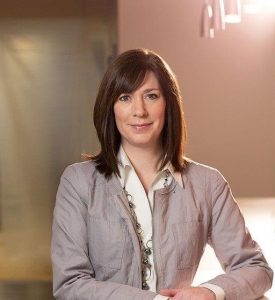The COVID-19 crisis has reshaped consumer and client behavior, disrupting how businesses work and driving marketers to pivot and innovate. In a matter of months, the pandemic has accelerated e-commerce by a decade, caused nearly half of small businesses to close their doors, and motivated brands, big and small, to rethink their business and marketing strategies for the future. Additionally, the nationwide reckoning over race has prompted brands to take a stand on social issues and double down on balancing profit with purpose.
So, when the new constant is radical, fast-moving change, how do business leaders decide what bets to make in a sea of endless – but potentially rudderless – possibilities?
First, we must acknowledge that the models of the past won’t work in this radically altered reality. The way forward is full of unknowns that are unfolding at an unprecedented rate. What’s needed is a common sense-based path forward that lives into the full potential of today’s world, supported by the agility to course correct when the landscape shifts again.
The solution is to futureproof the agency model by placing growth planning at the center. This starts with a forensic analysis of current and future potential that comes to life via a delivery system that can adapt at speed as needed. This model is about the now and the next, and challenges legacy ways of working in favor of an open-minded way of embracing all that change can offer in the relentless pursuit of being better.

To execute on a futureproof model, agencies and clients need to ask themselves the following seven questions:
1.In a sea of complexity, what’s the single most important result?
Truly identifying, owning and organizing around a clear and unobstructed north star is fundamental. It’s all too easy to waste organizational time, energy and resources chasing dog whistle KPIs that manifest as a drain on progress. Now more than ever, it’s imperative to decide what to chase and why, and remove impediments by designing the right framework against which to operate and measure success.
2.What’s the “next” question that will matter most?
Based on the Law of Accelerating Returns by Ray Kurzweil, we will experience 20,000 years of change in this century alone. And the intervals between moments of change will get shorter and shorter, blurring the lines between today and tomorrow.
This requires us to go all in on the opportunity that is lying around the corner – beyond toe-in-the-water testing – and learn our way forward. When we bet well, we’ll transform faster and enjoy the fruits of innovation; when we get it wrong – and we will, if we’re trying hard enough – the speed and incremental nature of the journey mitigates any major risk.
3.How do we achieve growth the right way?
When marketing shifted from a cost center to a growth driver, advanced via the data and tech surge of the past decade, the industry’s holy grail became short-term ROI. This narrow definition of success ignores the fundamentals of marketing science and how brands grow. It also fails to account for the human path-to-purchase experience and the nuances and opportunities inherent in every consumer’s journey.
We need to reverse this trend and instead, build upon what has been learned and proven over time while adopting innovations that advance our holistic growth in line with scientific facts.
4.How healthy is your core?
The marketing funnel remains a core framework for understanding the consumer journey. For decades, media and advertising focused primarily on the upper funnel driving brand awareness. Over the last few years, thanks to big investments in data, we’ve been exercising our collective muscle against the lower funnel to bolster performance. This has left the middle funnel – the connective tissue – sorely ignored.
With the signals we now have access to, and advanced analytics at our core, a forensic understanding of how to optimize the entire funnel for growth is imperative. Across both connections and content, it’s as simple and as hard as meeting consumers where they are: All consumers. Anything less leaves value on the table.
5.When the path is clear, are you ready to go?
As our world becomes increasingly sophisticated, there is a greater need for organizational transparency and simplification. While the intelligence arms of our organizations are expanding exponentially, the delivery mechanisms (structure, decision-making, process, workflow) have been slower to adapt. This is an advantage many start-ups enjoy because their businesses are organized around the needs of their end user, free from the distraction of legacy measures of success.
An agile and frictionless delivery engine is as important as the intelligence itself. As Peter Drucker said, “If you want something new, you have to stop doing something old.”
6.Are your stakeholders ready to run the race?
Many have heard the saying, “Culture eats strategy for breakfast,” and it’s fair to acknowledge how hard change management is. The more disruptive the change, the more complicated the task and journey. But the fact remains: change doesn’t happen unless the community carries it forward, buys into the vision, understands the path and commits to taking the steps.
If you want to sign up for disruption or transformation, landing the vision and strategy is easy. Now the hard work begins.
7.Are you paying for what you want versus what you get?
It’s true: you get what you pay for. Designing a commercial model that shapes the right behaviors and incentivizes the desired outcomes is mission critical. If the signals, motivations or asks are not aligned with what you truly value, then you’ll be paying for what you get.
Full commitment to a commercial model that is fair, logical, transparent and value-driven for today and tomorrow’s world is the surest and most productive way to advance the agency-client model into a new and healthy chapter.
Written by:
Eileen Kiernan, Global CEO, UM